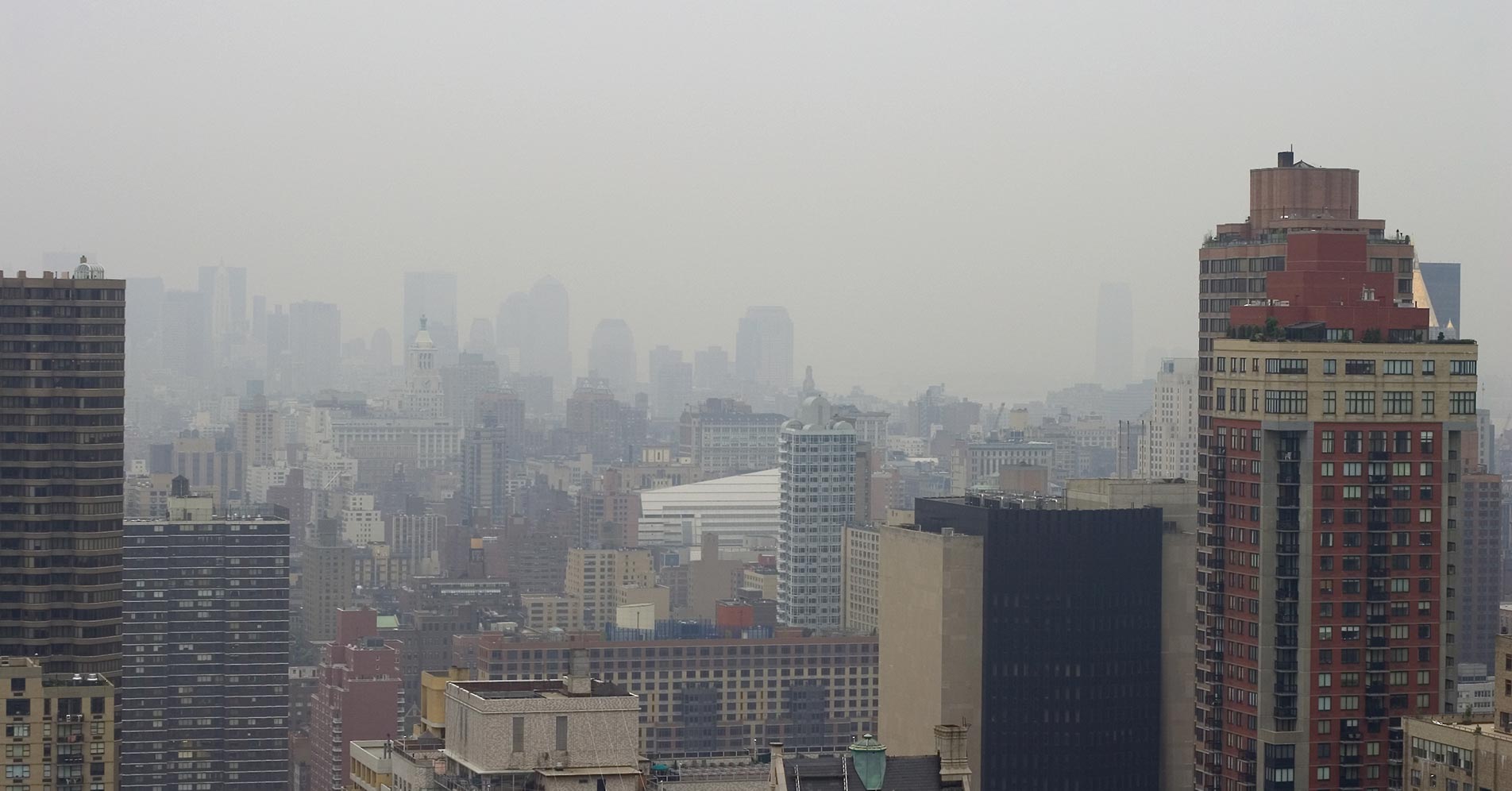Satellite images of cleaner air over major global cities have been widely circulated in recent news. Anecdotal evidence seems to support that while total mortality numbers associated with the COVID-19 pandemic continue to increase, the environment seems to be improving. While it is true that fewer gas-fueled vehicles might be on the roads due to shelter-in-place orders, diesel trucks, buses and freight hub traffic has largely remained consistent. There are a number of factors that could be influencing reports of improving or declining environmental conditions during the pandemic. These include the lack of sufficient data, differences in data interpretation, the basis for the comparisons, the types of pollutants being compared, and the purpose of the message being portrayed.
As the oldest voluntary public health organization, the American Lung Association was created in 1904 to improve lung health through the betterment of air quality for all. Transportation-related emissions have become a primary focal point for the American Lung Association in the past 15 years because transportation emissions can realistically be improved.
Researchers in multiple countries are exploring the apparent correlation between the COVID-19 pandemic and environmental conditions. A recent study by Harvard’s T.H. Chan School of Public Health concluded that there is a significant correlation between high concentrations of fine particulate matter (PM 2.5) emissions from cars and increased mortality for COVID-19 patients. This link between pollution and COVID-19 deaths was previously documented by a group of Italian researchers as well.
In order to understand how these studies operate, it is important to review the correlation between transportation emissions and human health. Regardless of whether you live in an urban or rural location, between 40-60% of total pollutant emissions can be attributed to transportation sources.
To regulate these emissions, the Clean Air Act requires the Environmental Protection Agency (EPA) to set National Ambient Air Quality Standards (NAAQS) for pollutants considered to be harmful to public health and the environment. These standards were designed to provide for protection against exposure to harmful levels of six criteria air pollutants, including particulate matter, ozone, carbon monoxide, lead, sulfur dioxide and nitrogen dioxide. Transportation emissions typically contribute to particulate matter, ozone, carbon dioxide, nitrogen dioxide and air toxics concentrations.
The Harvard Study corroborates and reinforces previous research conducted at the University of Illinois at Chicago (UIC), which reflects the benefits of higher blends of ethanol on reducing PM2.5 emissions from vehicles. This previous research was conducted with help from the Hormel Institute, the University of Minnesota, a leading cancer research department and part of the Masonic Cancer Center.
Dr. Steffen Mueller, of UIC, found that increasing the blend of ethanol beyond 10% up to 25% significantly reduces cancer-causing aromatic and PM2.5 emissions from the combustion of fuel in vehicles. The Harvard Study takes the next step and directly links high levels of these emissions to increased vulnerability to contracting COVID-19.
By overlaying an atmospheric emissions model over census data, the UIC study documented ethanol’s ability to reduce PM2.5 concentrations. This was particularly evident in largely African American and Latinx neighborhoods near Chicago’s expressway corridors.
“The UIC Study may in hindsight provide insights into a potential link between the much higher mortality rate from COVID-19 deaths in PM2.5 polluted areas documented in the Harvard Study and the recent data on high COVID-19 death rates for minorities in the Chicago and Northwest Indiana area,” Mueller said, “Obviously, PM2.5 emissions are just one important variable besides preexisting health conditions and other factors that impact COVID-19.”
Similar to trends that have become evident with the spread of COVID-19, people who live, work, or attend school near major roadways are more likely to experience increased exposure to mobile emissions. Children, older adults, those with preexisting cardiopulmonary disease, and those with low socioeconomic status are among those at higher risk for health impacts from air pollution near roadways.
Healthy lungs are our first defense against respiratory illnesses and viruses like COVID-19, and it is important to ensure that the air we breathe is as clean as possible. Reducing PM2.5 emissions, which have been directly linked with the spread of COVID-19, can help reduce our vulnerability.
The transportation sector provides two areas in which emission reductions can be achieved; through improvements in engine technologies and the use of alternative fuels. Vehicle technologies are constantly being improved, but more can be done to contribute to emission reductions by using renewable fuels like higher blends of ethanol.
When shelter-in-place orders are fully lifted and it is time to start driving again, it is important to consider what we can do to improve our air. E15 (a biofuel blend of 15% ethanol) — also sold as Unleaded 88 — has been approved for year-round use in 2001 and newer passenger vehicles by the EPA, and E85 (a biofuel blend of 85% ethanol), is approved for use in all flex-fuel vehicles. Higher blends of ethanol, such as E15 and E85 (in addition to midlevel blends of E20 and E30), provide additional octane and lower VOCs and other controlled emissions. These ethanol blends provide emission reductions without necessitating lifestyle changes, making them a common-sense option for the betterment of air quality.
The impact of COVID-19 is undeniable, and it is important that we as a society do everything we can to improve our chances of winning the battle against future pandemics. After all, we all need clean air to breathe.
Particulate matter (PM) is a mixture of solid particles and liquid droplets found in the air. Some particles such as dust, dirt, or smoke are large or dark enough to be seen with the naked eye. Others are so small that they can only be detected using an electron microscope. Because PM can range in size, it is classified into two categories; PM10 and PM2.5. PM10 refers to inhalable particles with diameters that are generally 10 micrometers and smaller. PM2.5 refers to fine inhalable particles with diameters generally 2.5 micrometers and smaller. To provide some context for these sizes, the average human hair is approximately 70 micrometers in diameter, making it 30 times larger than the largest fine particle.
Due to the microscopic size of PM2.5 once it is inhaled the lungs have a particularly hard time filtering the particles, which contributes to diminished respiratory health. PM of any size is generally associated with the following health impacts:
• Premature death in people with heart or lung disease,
• Nonfatal heart attacks,
• Aggravated asthma, and
• Decreased lung function.
In contrast to PM, tropospheric or ground level, ozone is not emitted directly into the air. Instead, tropospheric ozone is created by chemical reactions between oxides of nitrogen and volatile organic compounds. Ozone is created when pollutants emitted by cars, power plants, refineries, and other sources chemically react in sunlight. Ozone is most likely to reach unhealthy levels on hot, sunny days in urban environments, but high ozone levels are still possible during colder months and in rural areas. Exposure to high ozone levels can:
• Cause coughing and sore or scratchy throat;
• Inflame and damage the airways;
• Aggravate lung diseases such as asthma,
emphysema and chronic bronchitis;
• Cause chronic obstructive pulmonary disease (COPD).
Transportation emissions also contribute to high levels of air toxics called volatile organic compounds (VOCs), which are compounds that are known or suspected to cause cancer or other serious health effects. Examples of mobile source air toxic VOCs include benzene and formaldehyde. Health impacts of air toxic pollutants at harmful concentrations and qualifying durations can include:
• Increased cancer risk
• Damage to the immune system;
• Neurological disorders;
• Developmental disorders; and
• Respiratory health problems.
Carbon dioxide (CO2) enters the atmosphere through the burning of fossil fuels and certain chemical reactions. Carbon dioxide is generally removed from the atmosphere when it is absorbed by plants; however, an overabundance of CO2 contributes to greenhouse gas formation. Greenhouse gases can remain in the atmosphere for different amounts of time, ranging from a few years to thousands of years.
Nitrogen dioxide (NO2) is another pollutant that is primarily released into the air through the combustion of fuel used for transportation. As a member of a group of highly reactive gases known as nitrogen oxides, NO2 is used as the indicator for the larger group and contributes to the formation of tropospheric ozone.













